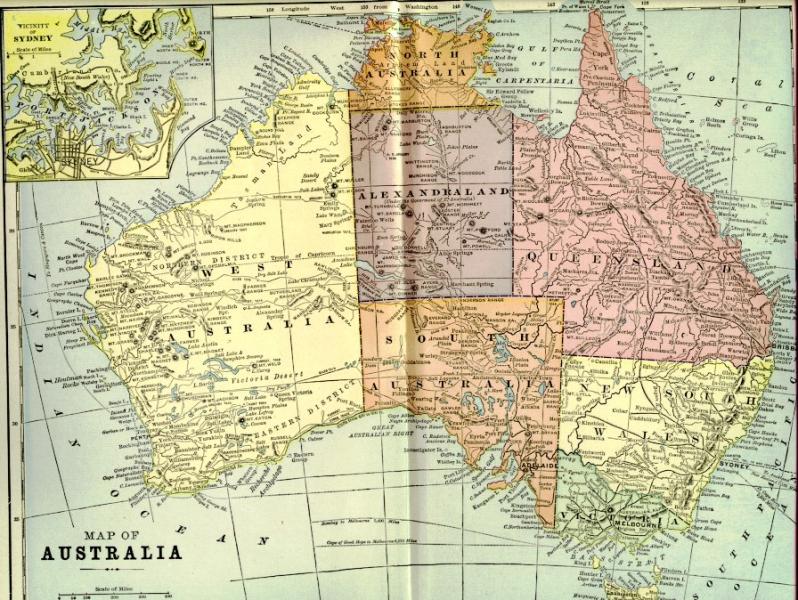Today, we cross Australia. The University of Houston's College of Engineering presents this series about the machines that make our civilization run, and the people whose ingenuity created them.
In 1787, the British dumped a boatload of prisoners in Sydney Harbor, near an inlet Captain Cook had named Botany Bay. The settlement soon turned from a penal colony into a flourishing city. Only 32 years later Sydney's citizens had reached the point where they could begin erecting a major cathedral.
But British Australia was limited to a 50-mile strip along the east coast. That was all there was until 1836. Then settlers founded a new city on the southern indentation of Australia. They called it Adelaide after a little-remembered queen.
Australia extended 2400 miles to the west of Sydney and 1700 miles to the north of Adelaide. All that was a vast, inaccessible wilderness. But humans are inquisitive. Naturally, the British had to know what lay beyond those tiny settled patches. They began a series of explorations every bit as difficult as Lewis and Clark's.
The first explorers stayed near the coastline. Then they began striking out toward the center of the subcontinent. One explorer, John Macdouall Stuart, had been part of an expedition that got halfway across Australia in 1845. In 1858 he organized the first of six attempts to get from Adelaide to the northern tip. After the first three attempts had failed, the government offered a £10,000 prize for the first person who crossed Australia south to north.
Stuart set out again in 1860, only to be turned back by "hostile Aborigines". Meanwhile, others died trying to win the prize. Stuart organized a fifth failed attempt in 1861. That October his group made the attempt that finally reached the Indian Ocean in July, 1862. It'd taken four years of trying, but they'd done it.
My interest in that journey was triggered just recently. By an odd set of circumstances, I've been in touch with astronaut Andrew Thomas up on the Mir Space Station. He told me his great-great-grandfather was a naturalist with the last Stuart expedition. When Thomas made his first shuttle flight, he carried the steel "flint" his forebear had used as a fire starter on that journey.
The comparisons and contradictions of that act are mind-boggling. Thomas is as far out on today's frontier as his great-great-grandfather was 136 years ago. But when Mir's orbit crosses Australia, it takes only six minutes to make the journey that once took nine months. That "flint" was a neolithic technology riding on a vehicle that Stuart would've found unthinkable.
And as for Thomas, his frontier isn't about space travel at all. It's about rewriting medicine by removing gravity. He's up there studying kidney stones, protein growth, the human immune system, and breast cancer cells. He's up there tacitly showing us that human understanding is being recast when we step clear of gravity -- when we leave the flat earth on which we've lived ever since we were no more than primordial cells.
I'm John Lienhard, at the University of Houston, where we're interested in the way inventive minds work.
(Theme music)
My sources for this episode have been a variety of entries from the 1897, 1911, and 1970 Encyclopaedia Britannica and from the British Dictionary of National Biography, as well as both e-mail and telephone communications with Dr. Andrew Thomas on Mir.

Click on the thumbnail above for a full-size map of Australia from the 1897 Encyclopaedia Britannica. This map represents our knowledge of the geography of Australia at a time somewhat less than 35 years after the epic journey of McDouall Stuart's group. Adelaide is in the lower right corner of South Australia. The city of Darwin was yet to be built, but you can just make out Point Darwin on the upper left side of North Australia